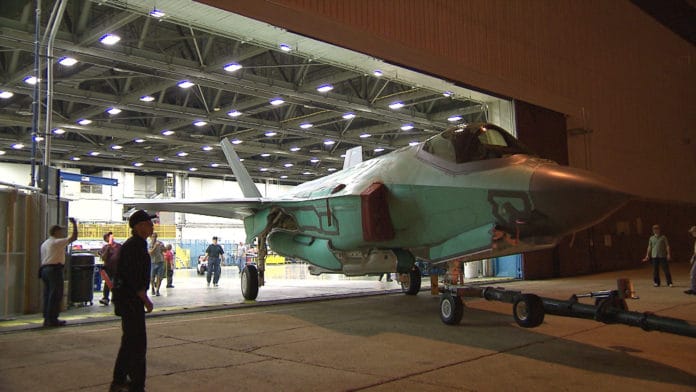WASHINGTON — Lockheed Martin Corp. could lose as much as $40 million because it’s late delivering fully functioning software for the first F-35 fighters due to be declared combat- ready, according to the Pentagon.
The money is part of $100 million that the Pentagon’s program office has held out as incentives for Lockheed, the contractor on the $391.1 billion F-35 program, to complete three successive versions of software needed to give the jet increasingly advanced combat capabilities.
It’s unlikely that Lockheed “would be earning much” of the fee for the initial software, known as 2B, Air Force Lieutenant General Christopher Bogdan, head of the Pentagon’s F-35 program office, has told reporters.
The F-35 is a flying computer, with each plane having more than 8 million lines of code. Flight testing of the 2B software, which is essential to delivering the first planes’ promised capabilities, was supposed to be completed by late February, about four months late, but now may take until mid-June, according to the Pentagon’s test office.
Testing was extended to debug software flaws before a key milestone: declaring that the first F-35s have an initial combat capability, which is scheduled to happen as soon as July. Bogdan said the intent is to debug the most serious deficiencies and then the Marine Corps will declare the initial combat capability for its version of the F-35 despite remaining limitations that pilots will have to work around.
The 10 Marine aircraft to be deemed operational won’t have all the capability of later planes. The initial capability includes carrying only four weapons, all internally, for example. Later F-35s will be able to carry more and more varied weapons, some of them mounted under the plane’s wings.
The Defense Department’s F-35 program office won’t decide until late this year how much of the $40 million fee Lockheed will earn, Joe DellaVedova, spokesman for the office, said in an email. He said Lockheed also can qualify for fees of $25 million and $35 million for two later versions of the software, as well as $238 million in incentive fees for completing development of the plane on time.
Lockheed spokesman Michael Rein said in an email that “first and foremost, we are focused on execution of 2B software testing to deliver its total capability to the Joint Program Office and Marine Corps.”
The 2B award fee “is only a portion of the overall software milestone award fee,” Rein said.
Bogdan told reporters on March 24 that the software deficiencies will be fixed and aren’t severe enough to delay the Marine Corps’ planned declaration of initial combat operations.
The service “understands the limitations and has operational workarounds to ensure they have the capability they need,” he said.
Bogdan said the deficiencies were discovered in the most complicated test sorties, when four F-35s practiced observing air and ground threats, passing that information to each other via data links and using their onboard computers to fuse the data and generate a common picture.
The software sometimes “creates an inaccurate picture for the pilot,” he said.






